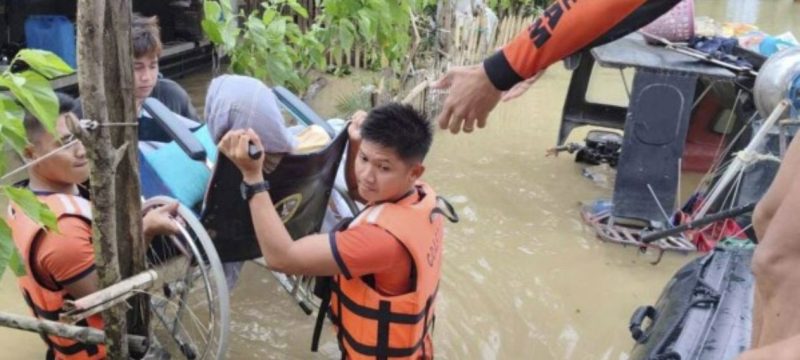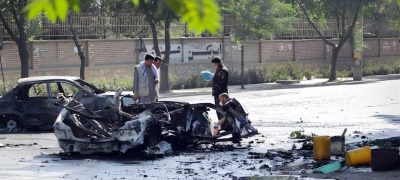MANILA, Philippines (AP) — Torrential rains triggered by an approaching tropical storm have led to widespread flooding in the eastern Philippines, resulting in at least nine fatalities and leaving many people stranded on rooftops, officials reported on Wednesday.
In response to the disaster, the government has suspended public school and office operations across the main island of Luzon, except for essential disaster response services, as Tropical Storm Trami moves closer from the Pacific.
The fatalities occurred in five northeastern provinces and the severely affected city of Naga, primarily due to drowning and landslides, with about seven individuals still reported missing. Former Vice President Leni Robredo, a resident of Naga, shared on Facebook that many people have been stuck on their roofs for hours, and rescue trucks have been hindered by the flooding.
Read more: Ankara: Terror Attack on Turkish Aerospace Industries Leaves 5 Dead, 14 Injured
Coast guard personnel began rescue operations in flooded communities across eastern provinces such as Sorsogon, Albay, Camarines Sur, Catanduanes, and surrounding areas on Tuesday, but local authorities stated that the available rescue boats and personnel were insufficient.
The storm was last noted about 175 kilometers (109 miles) east of Echague in Isabela province, with sustained winds of 95 kph (59 mph) and gusts up to 115 kph (71 mph). It is expected to make landfall on the northeastern coast of Isabela between Wednesday night and early Thursday before moving across northern Luzon and exiting into the South China Sea by late Thursday. Forecasts predict that its extensive rain band could produce up to 20 centimeters (8 inches) of rain in a single day in the most vulnerable areas.
Thousands of residents have evacuated to emergency shelters in northeastern provinces, and storm alerts have been issued for over 30 northern and central provinces, including the heavily populated capital, Manila, which may experience heavy rains despite being outside the storm’s direct path.
President Ferdinand Marcos Jr. canceled all appointments on Wednesday and held an emergency meeting to discuss disaster response strategies. He warned that “the worst is yet to come” and emphasized the need for preparation. During this meeting, Defense Secretary Gilberto Teodoro announced that military aircraft and ships would be deployed for evacuations and disaster relief, and additional support might be offered by allied countries, including Singapore.
Numerous passengers and cargo workers found themselves stranded at various seaports after the coast guard suspended inter-island ferry services and prohibited fishing boats from heading into the increasingly dangerous seas.
Rep. Luis Raymund Villafuerte of Camarines Sur province called for national assistance, noting that his flood-prone province has around 50 rescue boats but needs approximately 200. In Quezon province, Gov. Angelina Tan reported that floodwaters have risen to 3 meters (nearly 10 feet) in some areas, forcing at least 8,000 residents to evacuate.
The Philippines faces about 20 storms and typhoons each year and is situated in the “Pacific Ring of Fire,” an area known for frequent volcanic eruptions and earthquakes, making it one of the most disaster-prone countries in the world. In 2013, Typhoon Haiyan, one of the strongest tropical cyclones on record, resulted in over 7,300 deaths or disappearances, devastated entire villages, pushed ships inland, and displaced more than 5 million people in the central Philippines.









